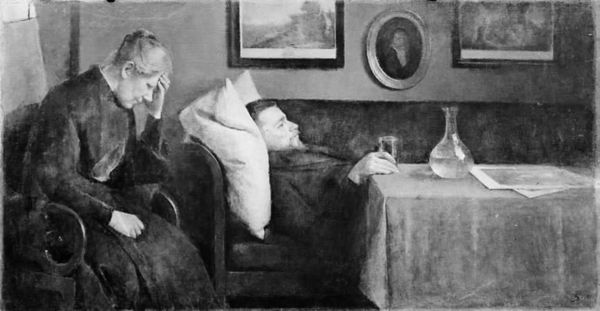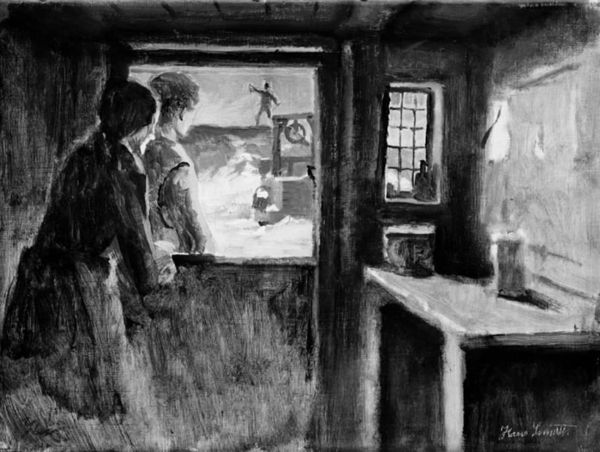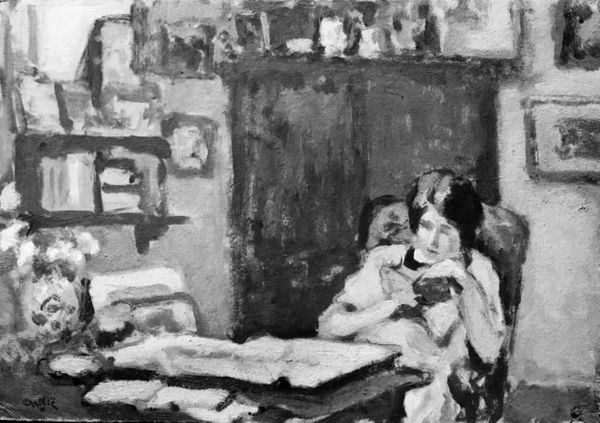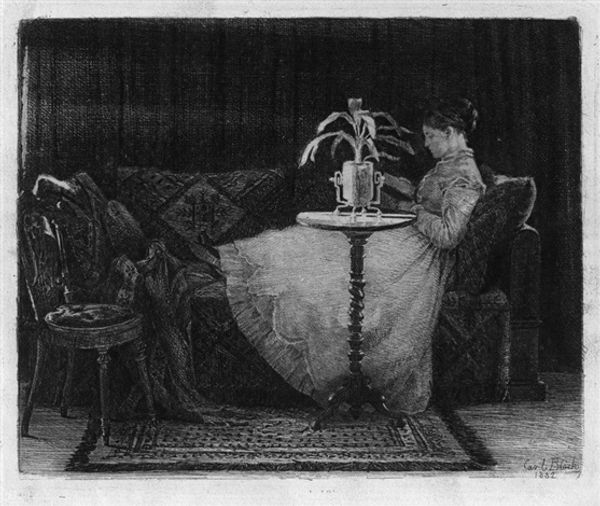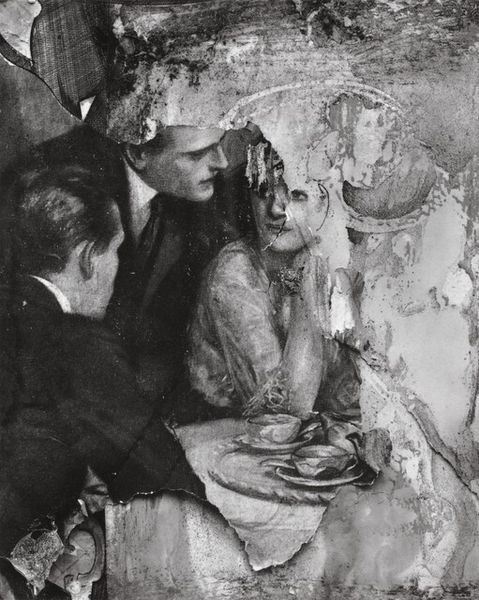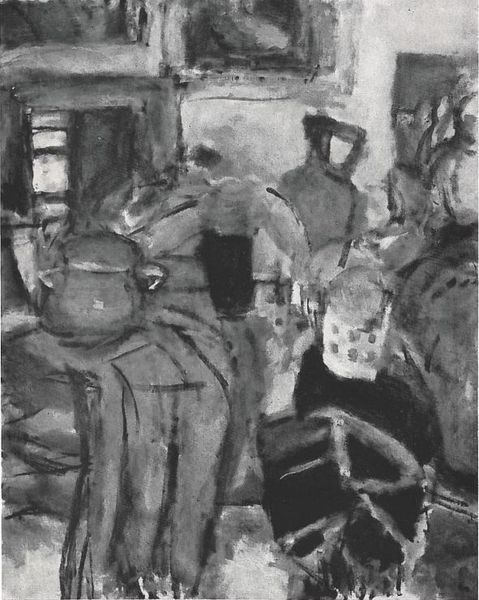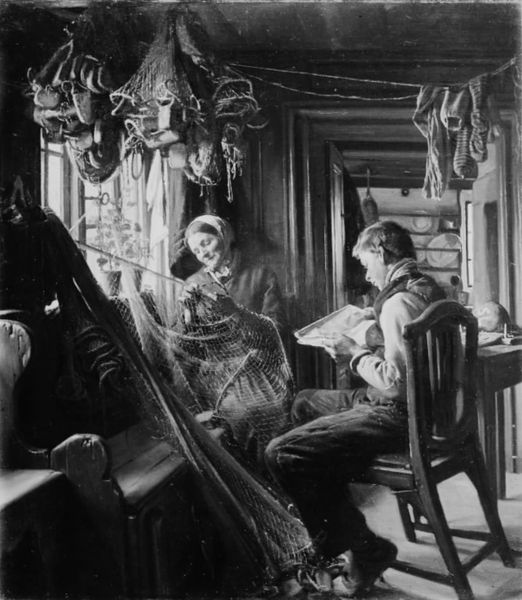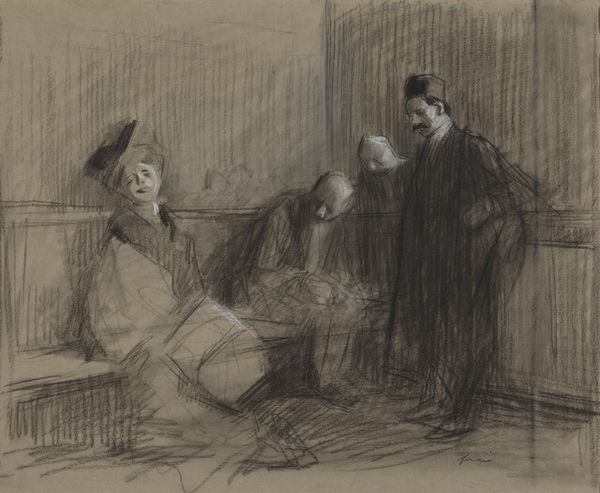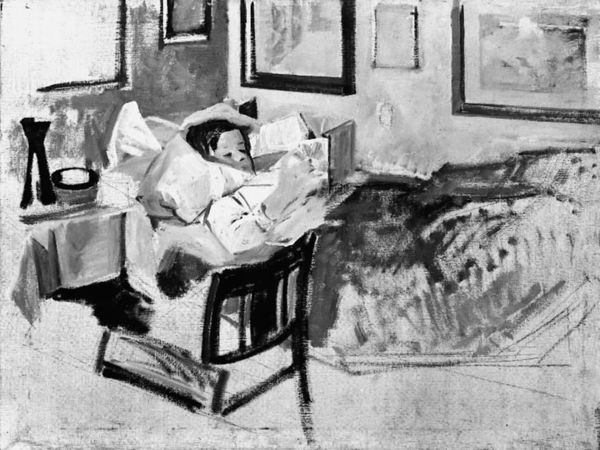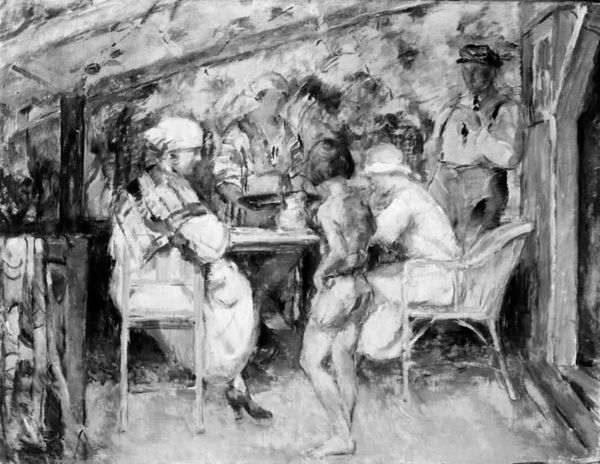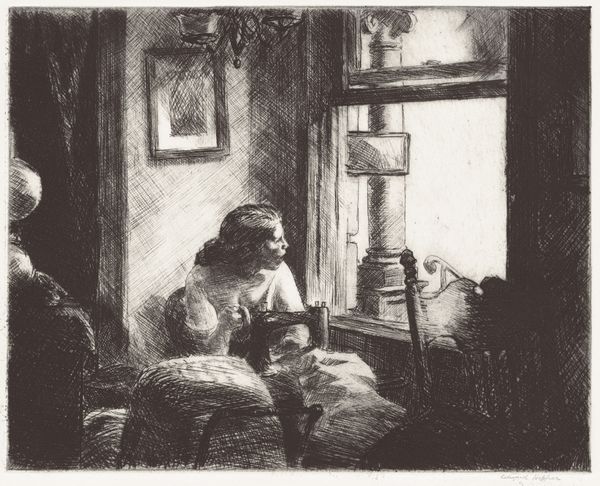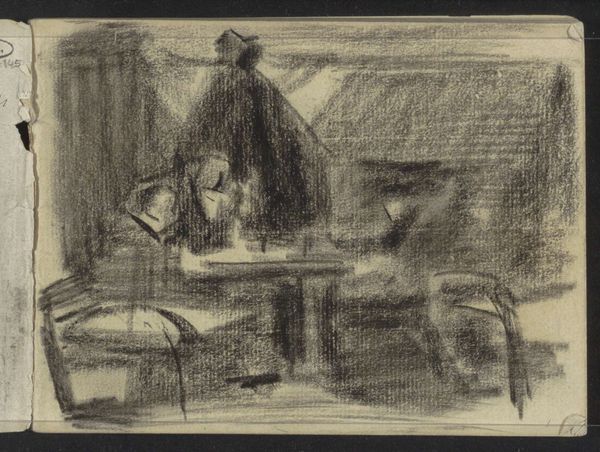
Interiør fra en stue, hvor en ung mand ligger henslængt i en sofa og spiller lut, aften 1890 - 1907
0:00
0:00
Dimensions: 33 cm (height) x 43.3 cm (width) (Netto)
Curator: As you view P.A. Schou’s painting from around 1890 to 1907, titled "Interior from a living room where a young man is slumped on a sofa and plays the lute, evening," consider its contribution to genre painting, specifically its intimate depiction of domestic life. Editor: There’s a feeling of languid comfort here. A solitary figure, bathed in soft light, seemingly lost in his music within the private world of his parlor. The paintings that form a constellation of squares behind him seem to mirror the geometric facets of the scene's composition. Curator: Yes, and I see that intimacy also expressed through symbolism. The lute was, historically, a signifier of education and sophistication. The evening setting suggests a moment of contemplation, a respite from the demands of the day. There is the light from the lamp as well—a recurring motif—often representing enlightenment or presence. Editor: Absolutely. And the room itself – all of those framed paintings, like portals to other possible realities – speak volumes about the social context. Here, it's the bourgeois, intellectual class finding pleasure and solace in art and music, but there's also an undercurrent of something else—perhaps an anxiety linked to these leisure activities being coded male during a time of gendered socio-political constraints. Is he allowed to be so passive, so openly involved in something perceived to be feminine, and what tensions are thereby constructed? Curator: That's a fascinating lens. The man is almost recumbent, isn't he? An atypical pose in art, but also typical because he does own the space around him. How does this casual arrangement contribute to, or perhaps disrupt, expected performative constructs of masculinity? It seems to suggest a vulnerability and quietness rarely permitted to men in that era, thus perhaps a progressive rendering. Editor: It does bring out important historical tensions, because to truly interpret a scene we need to read more than the dominant ideologies and understand the pressures facing individuals who did not belong to that ideology, even in positions of high power and wealth, to understand if Schou painted this in a way to acknowledge any type of transgression on the part of his male protagonist. Curator: That really invites us to reconsider how artistic intimacy becomes another form of self expression or social subversion, if we're attuned to the psychological depths involved. Editor: Precisely. I'm moved to consider, after our discussion, that it's far from a neutral portrait but contains deeper anxieties. Curator: Agreed. Thank you for illuminating these important nuances in P.A. Schou's genre painting.
Comments
No comments
Be the first to comment and join the conversation on the ultimate creative platform.
